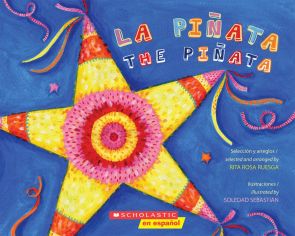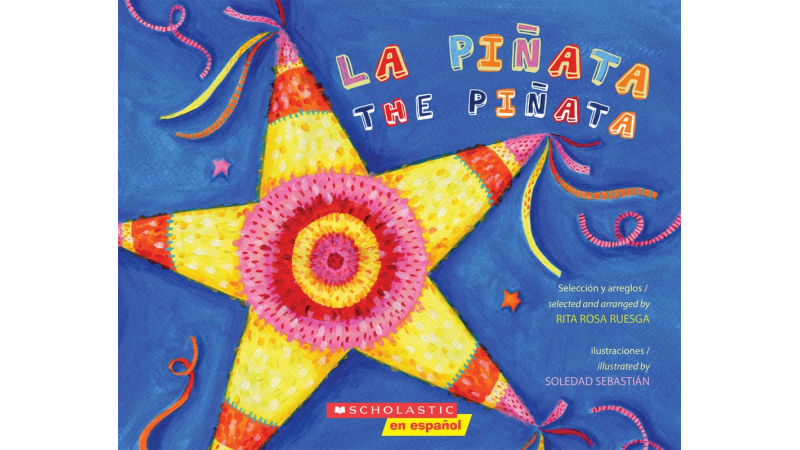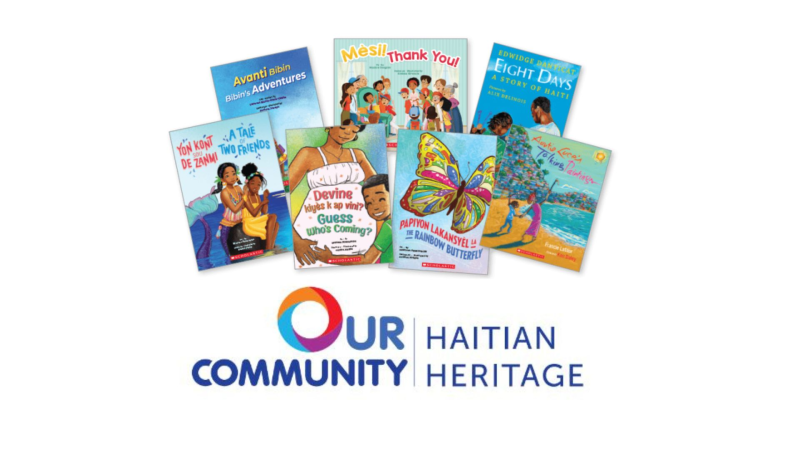 #WeHaveDiverseBooks: 5 Questions is a spotlight on OOM dedicated to exploring Scholastic’s amazing distinct voices. We’ll take a deep dive into the backgrounds, inspiration and works of these authors and illustrators.
#WeHaveDiverseBooks: 5 Questions is a spotlight on OOM dedicated to exploring Scholastic’s amazing distinct voices. We’ll take a deep dive into the backgrounds, inspiration and works of these authors and illustrators.
-----
Today, we're sitting down with Rita Rosa Ruesga, the author of the bilingual picture book La Pinata/The Pinata and the Spanish-language picture book Los Mariachis, for a Q&A!
Tell us a little bit about your background and yourself as a child.
I was born in Santiago de Cuba located in the Southeastern-most part of Cuba. I went to a small school in my town where I studied music, piano and voice. Since I was six years old, I loved to write songs and stories. As a child I participated in many festivals, contests and cultural events and when I grew up I worked as a choir conductor and music educator. I left Cuba and moved to Mexico, where I lived for two years and worked in a music conservatory located in a city called Santiago de Querétaro in central Mexico. My final stop was Miami, FL where I currently live with my two beautiful sons.
Where does your inspiration to write come from?
As a child, my inspiration to write came from playing outside with my friends. I have amazing memories of the joy and laughter of those afternoons and evenings when my friends and I would practically live outside. Playing outside was our only source of entertainment, because Cuba was such a poor country and electricity, toys and books were luxuries. I have channeled those childhood memories into my writings as an adult. I also love to read, and books inspire and feed my imagination.
In your book La Pinata/ The Pinata you use both English and Spanish to tell the story. Tell us more about the process of writing a bilingual book.
This book is a compilation of Spanish songs. When working on these types of books, I do a lot of research on how songs and music in general get adapted from country to country, and then I go ahead and implement my findings when translating the songs into English. Working on La Pinata/ The Pinata was a very interesting task, filled with creativity and lots of hard work. I think the final book is magical and that is thanks in big part to Soledad Sebastian’s beautiful illustrations and my amazing editor Maria Dominguez’s tireless efforts.
What would you like to say to any educators or students who pick up your books? What would you like them to know before they begin reading?
These books work well in many different types of classrooms, from Spanish to music classrooms and everything in between. Teachers and students can take the scores from the books and can download the music. The lyrics to the different songs can also be used when teaching new vocabulary, and the illustrations can work as part of a storytelling toolbox. These books can be used every day of the year, not just during Hispanic Heritage month.
Can you let us know what you are working on now?
I am working on a new musical album and on two new books right now. One book is for young readers and the other is targeted primarily at teens, which is very exciting for me because it is my first book for this age group. It’s an activity book filled with music and mysticism.






